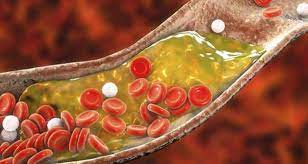What you should know about diabetes. Part II

Glucose metabolism : 1 Carbohydrate (sugars or starches) from food is converted to glucose in the stomach and intestines. 2 Glucose passes from the intestines into the bloodstream to be used. The leftover glucose is stored in the liver. 3 The presence of glucose at the intestinal level stimulates the release of insulin by the pancreas. 4 Glucose through the action of insulin enters the cells of the kidneys, brain, muscles and other organs of the body for energy production. Long-term health problems: The elevated plasma levels caused by diabetes can cause damage to large and small blood vessels and nerves. Diabetes can also decrease the body's ability to fight infection. As a result, people with diabetes are more likely to have serious eye problems, kidney disease, heart attacks, strokes, high blood pressure, poor circulation, tingling in the hands and feet, sexual problems, amputations, and infections. Proper control of diabetes can help prevent these problems or make...


.jpg)